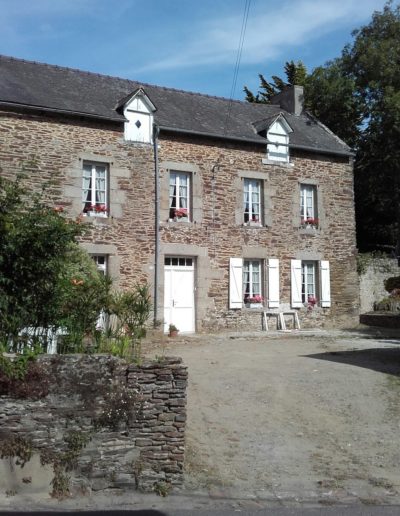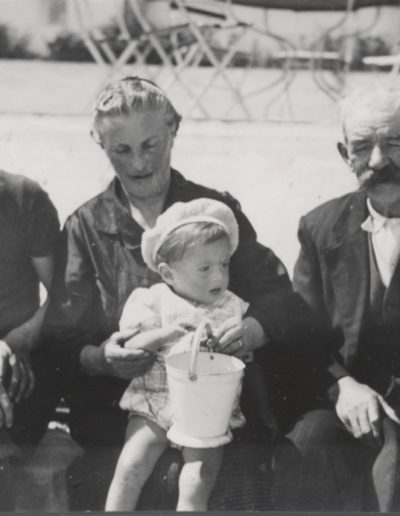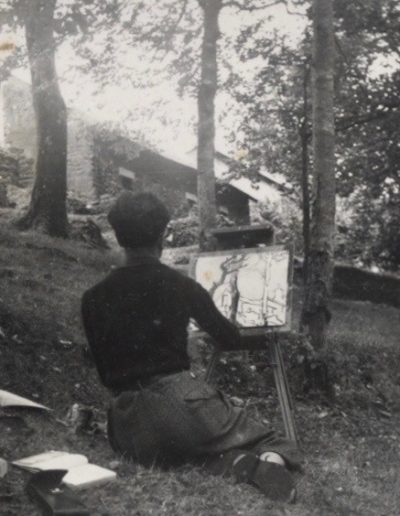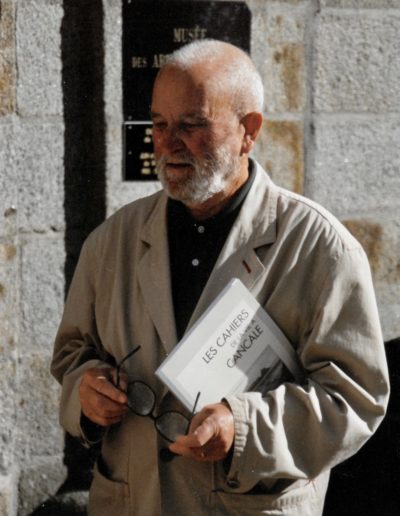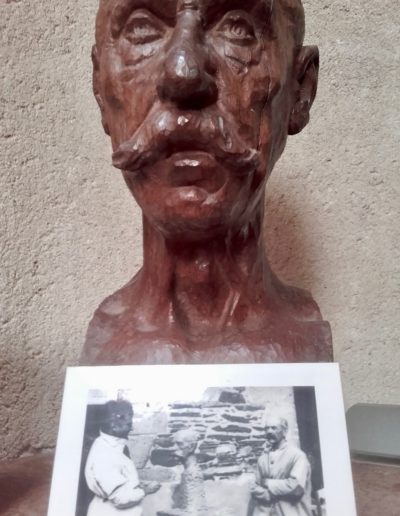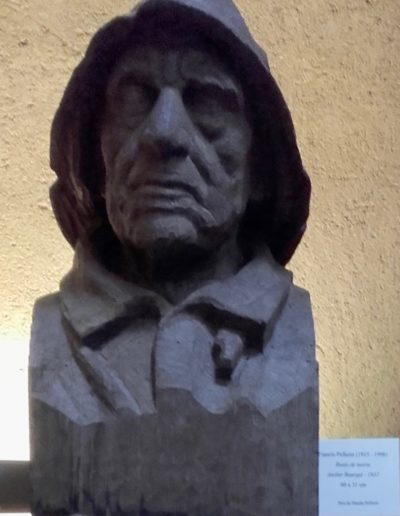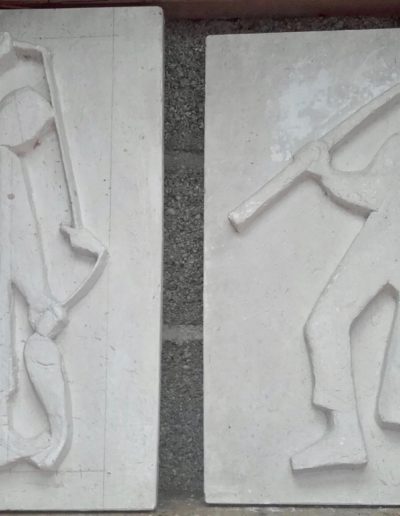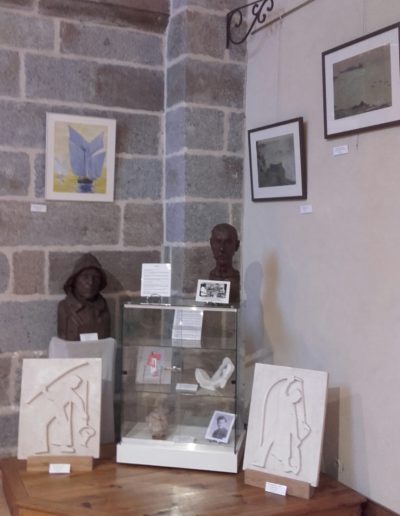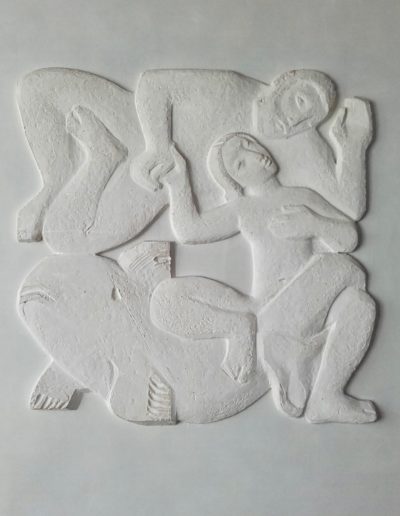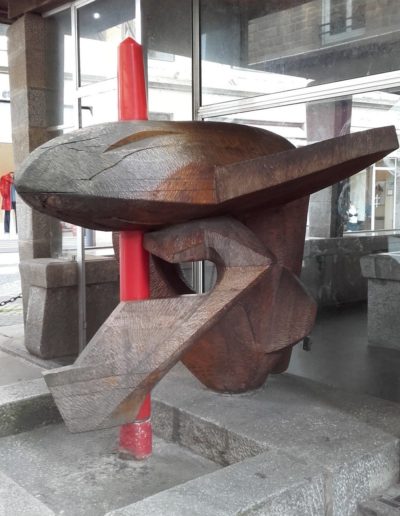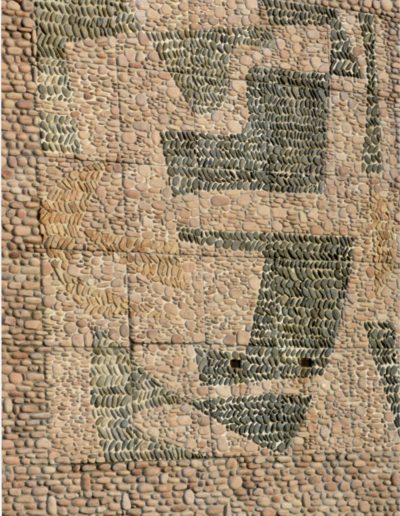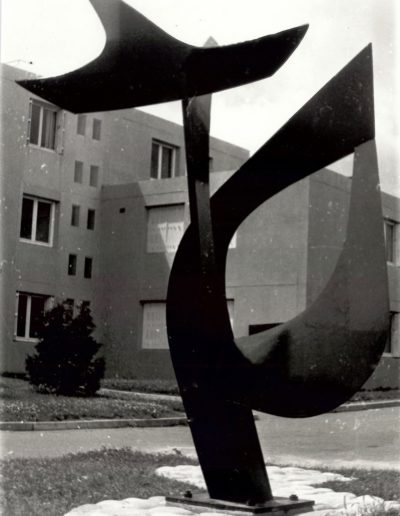Guide to works in and around Saint-Malo
Cancale
Francis Pellerin was born in Cancale on 2 April 1915 at La Forge, 5, rue de La Roulette. It was here that he spent his childhood and adolescence.
In 1928, he started an apprenticeship with the Cancale cabinet maker Henri Bagot, going on to study at the École des Beaux-Arts in Rennes in 1930.
Musée de Cancale
The Musée de Cancale, place Saint-Méen, holds a number of works by Francis Pellerin.
An oak bust of his father, Joseph Pellerin – a fisherman who first set sail to fish for cod off the coast of Newfoundland at the tender age of 11 – dates from 1933 and was given to the museum by Francis Pellerin’s wife, Suzanne.
The museum also displays the bust of a sailor, produced by a 17-year-old Pellerin in Albert Bourget’s atelier at the École des Beaux-Arts in Rennes.
There are two bas-reliefs in plaster produced between 1945 and 1950 depicting a fisherman fishing with a net and with a line respectively, as well as a study in plaster for the fishes commissioned for the water features at the Faculté de Droit in Rennes (1960).
Finally, two works in pastel date from before his residency in Rome (1946 to 1948): L’anse du four à chaux and Le rocher de Cancale.
The museum is able to exhibit these works thanks to a donation by Haude Pellerin, the artist’s daughter.
Saint-Malo
Six works displaying differing aesthetic characteristics can be seen in Saint-Malo:
- Façade of the former Inscription Maritime (currently the Maison du Projet du Musée d’Histoire Maritime), 27, quai Duguay-Trouin: Le mariage d’Amphitrite, bas-relief in granite, 1950, 450 x 220 cm.
- Le Grand Jardin lighthouse (at top): bas-relief representing Neptune, 1953
- Saint-Malo intra-muros fish market: a sculpture in oak (salvaged from the Château de Chambord) representing an “orbiche”, a dogfish, and timber framing in the roof decorated with stylised fish, 1954. The following riddle is carved into the exterior part of the beams, above the stalls: La mer nous porte. La marée nous déporte. Le pêcheur nous emporte. C’est ici qu’il m’apporte. (The sea carries us afloat. The tide carries us along. The fisherman carries us in. It is here that he carries us to.) For heritage conservation reasons, the town council removed Orbiche in 2003 and had a copy made by Guitton, a local joinery company.
- Saint-Malo casino, façade on Sillon side: a mural measuring 700 x 450 cm in pink, grey, black and gold-coloured pebbles, 1954. Francis Pellerin’s first non-figurative work was undoubtedly the first abstract art work created in Brittany and as such made a significant contribution to the history of art. Today the mural is partially obscured by a metal emergency exit staircase. (In addition, the building is currently under renovation and the mural has been hidden behind a metal grill since the beginning of 2020).
- Two abstract monumental sculptures commissioned under the 1% artistique scheme (difficult to see at the present time): a sculpture in the round, in Corten steel, 1973, at the secondary school in Saint-Servan; and a structure in black metal, 1974, at the former Collège Robert Surcouf, Saint-Malo, closed since 2017.

